The Sun
Due to its relativly closer distance from earth than other stars (the next nearest star is "Alpha centauri", 4.2 light years away from our Solar system), Our Sun, is the only star in the Universe which can be studied in detail through surface details and features of the size as good as a few tens of kilometers. Fact sheet for the Sun in detail can be referred from this link.
The Sun in our galaxy, Milky way
Our Sun, although ~109 times bigger in size (diameter) than our planet Earth, fills the picture of our galaxy, known as the Milky Way, as tiny as even less than a dot. Galaxy is referred to the cluster of stars collectively moving in space around a nucleus, mostly Active Galactic Nuclei or Black Hole. In the sky, Milky way can be spotted with naked eyes eyes on the very clear and dark nights. Several space and ground-based science missions are under operation to study our galaxy. For example, NASA's Wide-field Infrared Survey Explorer (WISE) is one of such instrument which is dedicated for the stuudy of our Milky Way galaxy's spiral arms. Our sun is known to reside in a minor arm, called Orion Cygnus.
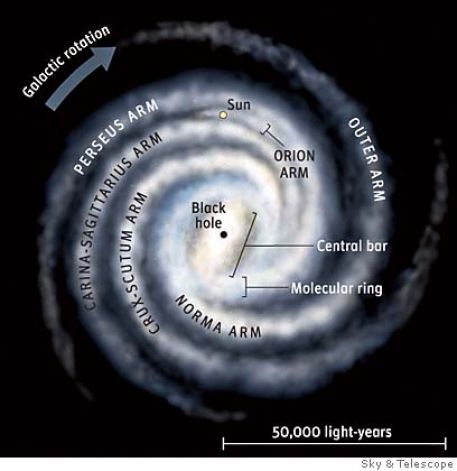
|
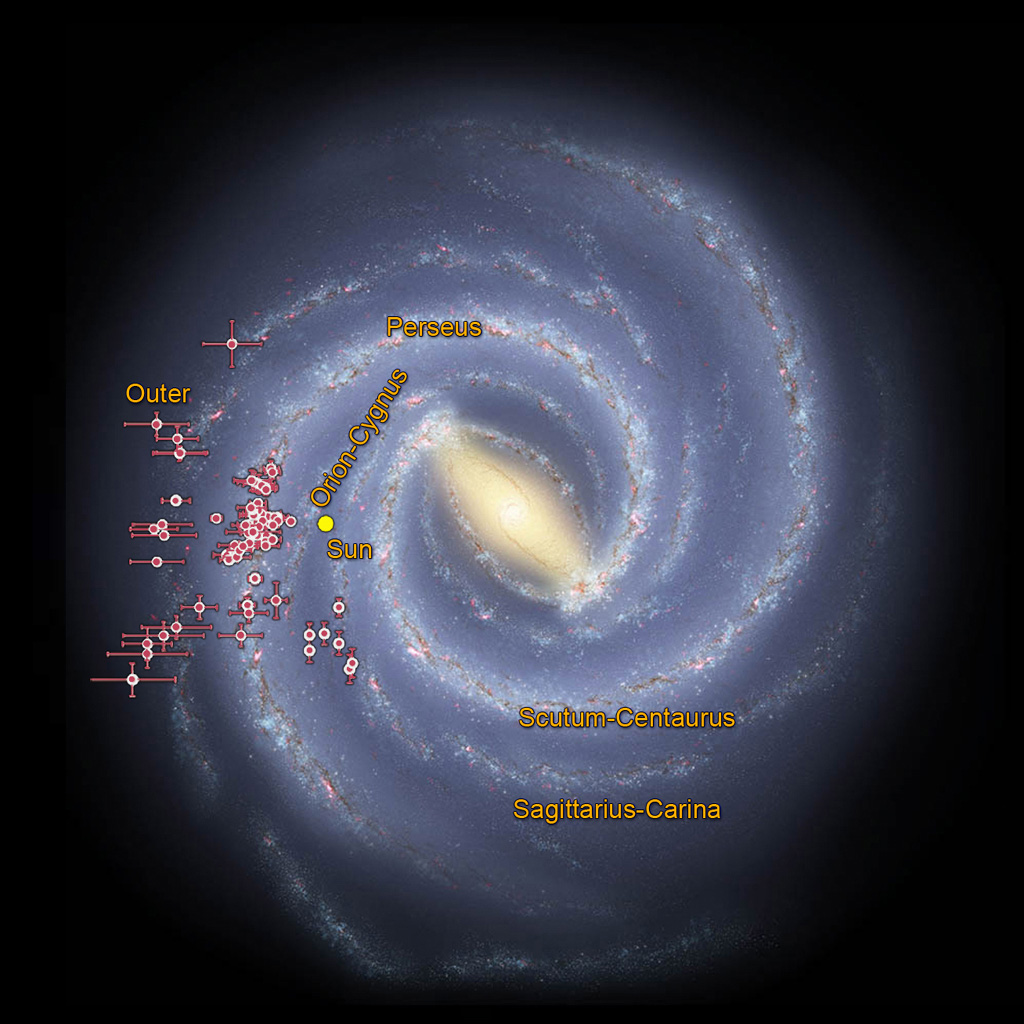
|
Study of the Sun
The study of the Sun is subdivided majorly as follows:
- Solar Interior
- Solar Atmopshere
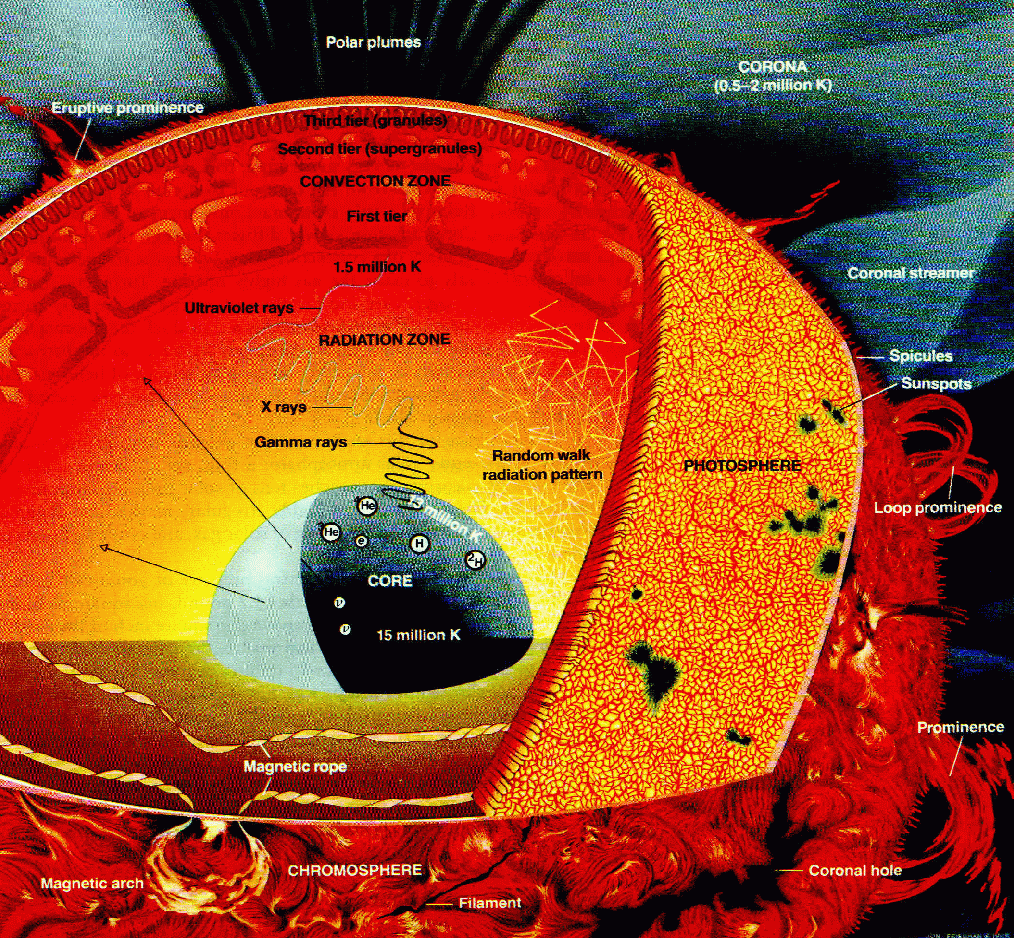
|
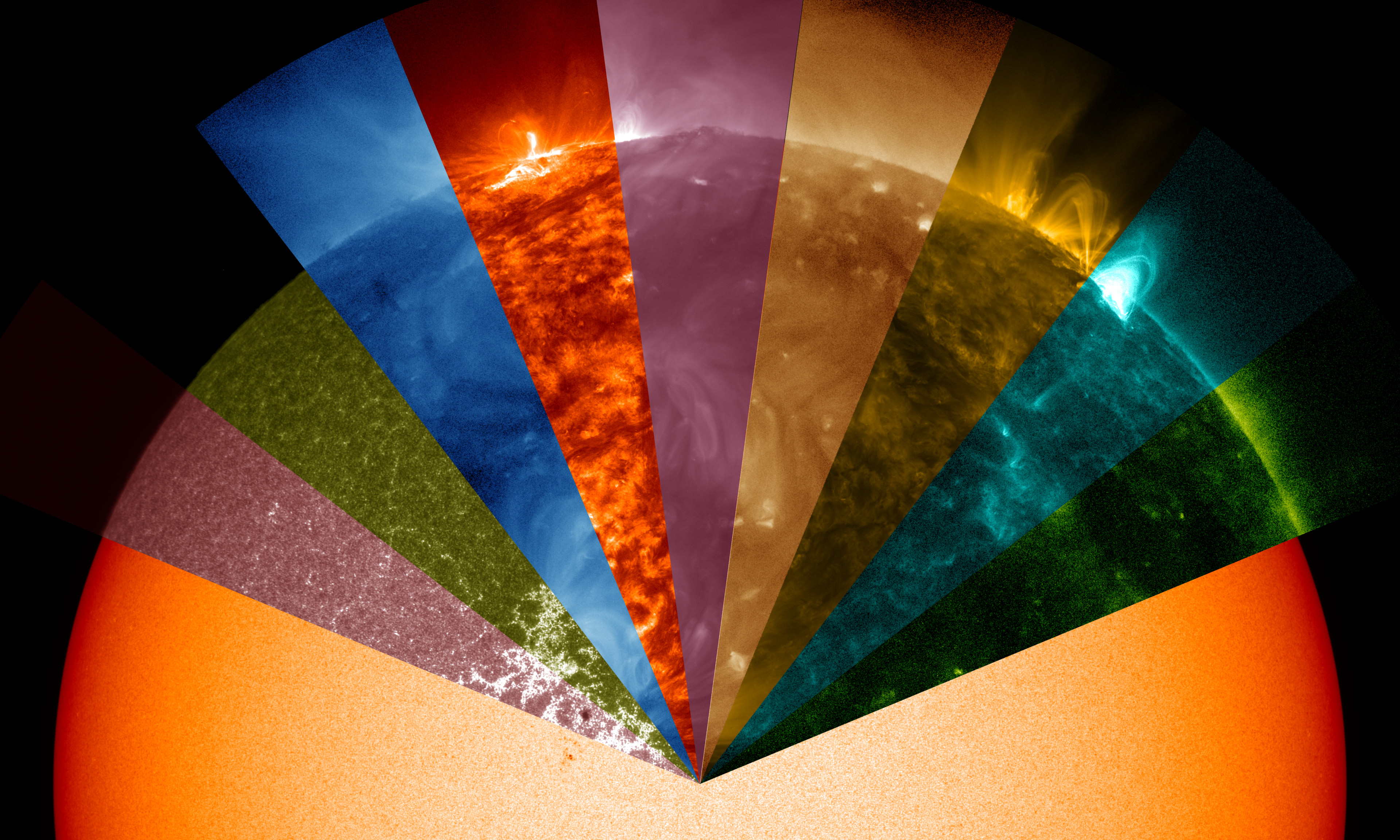
|
The Solar Interior to the Photosphere
The center of the Sun is ~ 700,000 km below the visible surface, also known as photosphere. Due to the infinite number of collison of photons with the dense matter inside the Sun, no light ray can make up directly from the core of the Sun to us. In this regards, solar interior is that part of the Sun which is can not be directly probed with the help of light/photons emitted from the Sun. Therefore, an alternate technique through measuring "Heartbeats of the Sun" has been developed by the solar researchers to explore solar interior, also termed as Helioseismology.
The solar interior is further subdivided in three prominent zones known as following:
- The Core
- The Radiative Zone
- The Convective Zone
The energy generation through (proton-proton) nuclear-chain reactions occurs in the "core" of the Sun which spans from the center to ~20% of the solar radius. The core is the main site of nuclear reactions where the hydrogen atoms are converted to helium and in the process converts mass into energy using the famous Einstein's relation of E = mc^2, where E is the energy emitted, m is the mass and c is the speed of light.
The radiative zone is that layer of the solar interior in which the energy, generated in the core, is transmitted through the process of radiation. Similarly, in the convection zone, the energy is transmitted through the process of convection. Convection, a process, which can be well explained through the example of water boling in a kettle. As soon as water reaches to its boiling point, we start noticing the bubbles on the water which is convection phenomena.
However it is important to note that the Sun does not have exact well-defined boundaries as it is gaseous in nature and the aforesaid values are the ones derived from the "Standard Models of the Sun" and the application of physical laws.
Solar Atmosphere (From the Photosphere to the Solar Corona)
Atmosphere of the Sun is the place where all of the solar activity takes place. More on the solar activities are presented at this link. The three main layers of the solar atmosphere are as follows:
- Photosphere (What we see from naked eyes)
- Chromosphere (Colorful part above the photosphere)
- Corona (Seen only during solar Eclipse)
The photosphere is the visible solar disk (photos -> light). It is so illuminated that the visibility of the other layers of the solar atmosphere is usually restrained. However during the solar eclipses, the chrompshere and corona can be seen. Although photopshere appear to have a perfectly smooth surface, however, high resolution observations of the solar photosphere (as shown in the figure above) are grainy. Such shape is termed as granules based on the underlying physical process, known as granulation. The temperature of the photosphere is ~5700 K.
The Chromosphere is understood to be a region of thickness of ~1000 km, just above the photosphere. The name "Chromosphere" is taken from multi-color appearance (chromo is the Greek word for color) seen during the solar eclipses. Temperature of this layer varies in the range of ~6000 - 20,000 K. The rise of temperature with the height in the solar atmosphere is surprisingly unusual phenomena. This behaviour continues in uppermost layer of the solar atmosphere i.e. the solar corona.
The corona is the region of the solar atmosphere above the chromosphere. The corona has a temperature of ~1 million kelvin (MK) and can even have higher temperature (of ~50 MK) during impulsive phenomena such as Solar Flares. At such high temperatures, the ambient charge particles emit X-rays and extreme ultra-violet (EUV) radiation which could only be observed from above the earth's atmosphere. The density of corona is about 10^-11 gms/cc and decreases further up to 10^-16 gms/cc.
Eruptive Phenomena on the Sun
Solar eruptive phenomena are termed to the processes occuring in the Solar atmosphere. Its study leads to a better understanding of the physical processes occurring in the teneous gas and plasma available in the solar atmosphere. Most studied, however not exhaustive list of solar eruptive phenomena is as following:
- Solar Flares
- Coronal Mass Ejections (CMEs)
- Solar Energetic Particles (SEPs)
Detailed information on the aforesaid processes can be referred through this link.
Ground and Space-based Solar observatories, Telescopes and missions
Although the Sun provides light ,and thus life, on Earth, several hazardous electromagnetic processes also occur on the solar atmosphere emitting lethal charge particles as well as radiation. Therefore, uninterrupted observations of Sun in multi-wavelength is although exciting on one hand, extremely necessary too for survival of life. Recent advances in science and technology enabled solar astronomers to built several state-of-the-art ground and space-based observatories to dedicatedly observe the Sun almost in entire electromagnetic spectrum. Following figures represent the schematic orbit as well as the wavelength in which Sun is being observed.
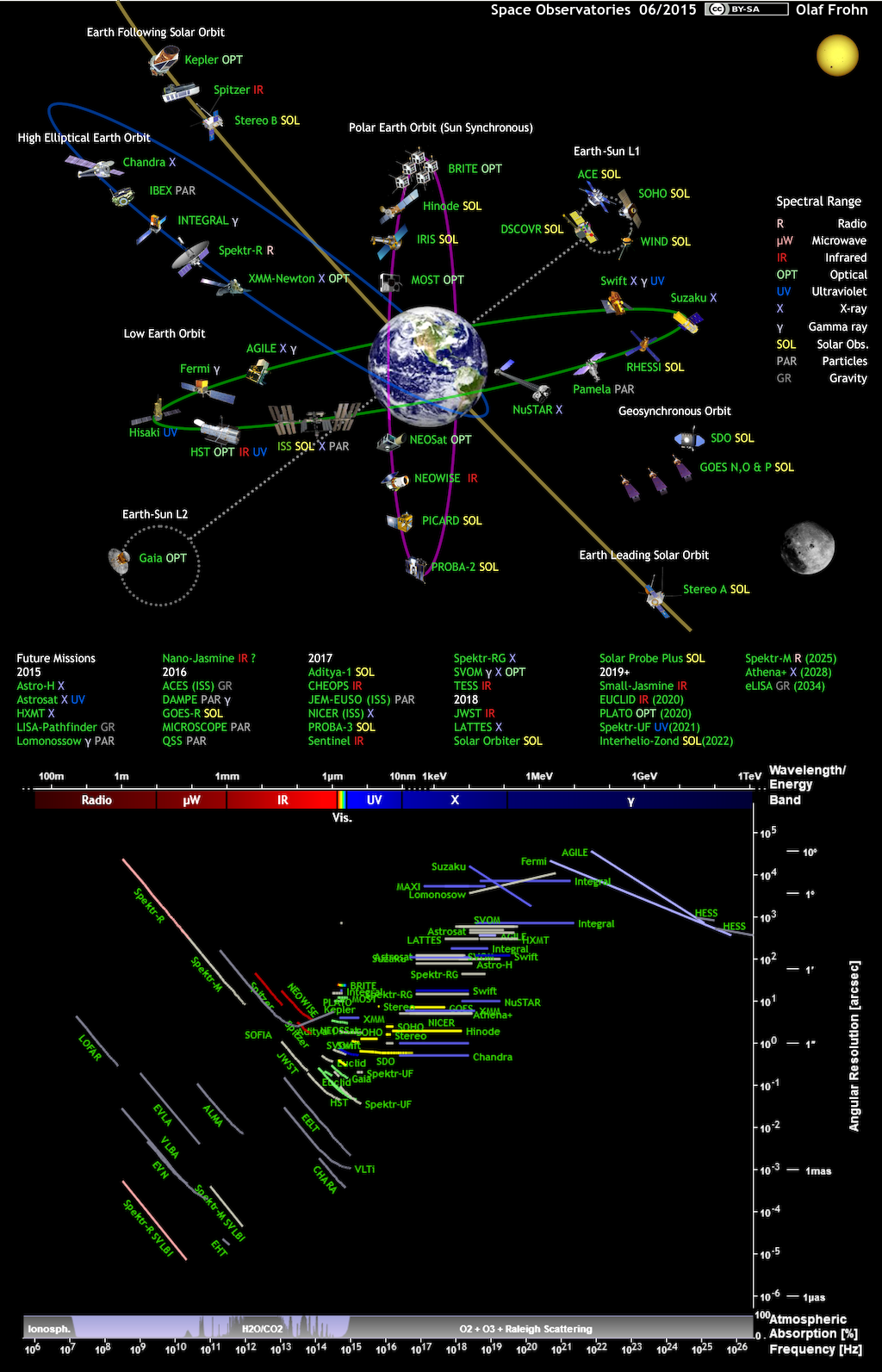
|





